While they may look adorable, they can cause a significant amount of damage to your property if they decide to take up residence under your shed.
Groundhogs are burrowing animals, and their tunnels can undermine the foundation of your shed or even your home. They can also destroy your garden or landscaping by eating your plants and flowers.
If you’re dealing with groundhogs under your shed, you’re probably wondering how to get rid of them. There are several ways to control groundhogs, from natural repellents to physical barriers and exclusion methods.
Some people choose to trap and relocate groundhogs, while others prefer to call in professional pest control and wildlife services.
In this article, we’ll explore 13 ways to get rid of groundhogs under your shed without harming them and discuss the pros and cons of each method.
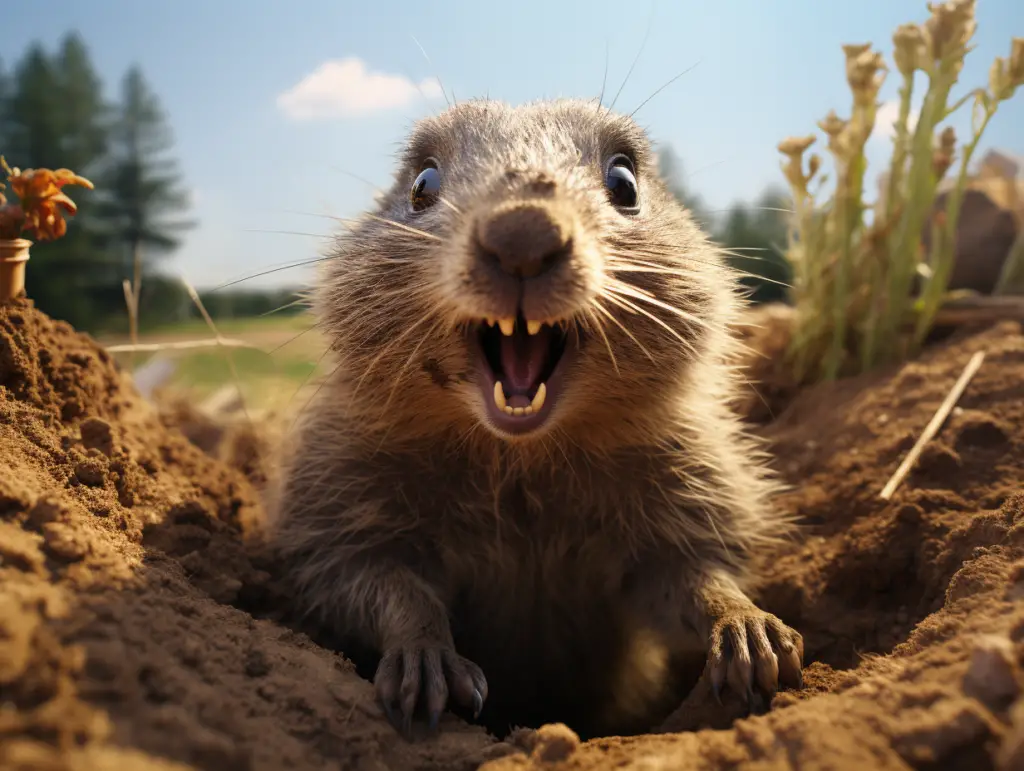
Key Takeaways
- There are several ways to get rid of groundhogs under your shed, including natural repellents, physical barriers, exclusion methods, and trapping and relocation.
- Professional pest control and wildlife services can also help you deal with groundhog infestations.
- It’s important to understand groundhog behavior and identify their presence to effectively control them and prevent future infestations.
Understanding Groundhogs and Their Behaviour
Groundhogs, also known as woodchucks, are large rodents that belong to the squirrel family. They are herbivores and feed on a variety of plants, including vegetables, fruits, and flowers. Groundhogs are known for their burrowing behavior and can dig extensive networks of tunnels and burrows in search of food and shelter.
Groundhogs are also known for their hibernation behavior. During the winter months, they enter a state of torpor, which is a state of reduced metabolic activity.
They build a special hibernation burrow that is deeper than their regular burrows and spend the winter months in hibernation, living off the fat reserves they have stored up during the summer months.
Groundhogs are often considered pests because of their burrowing behavior, which can cause damage to gardens, lawns, and structures such as sheds. They are also known as land beavers or whistle pigs due to their whistling alarm call when they sense danger.
To effectively get rid of groundhogs under a shed, it is important to understand their behavior and habits. They are active during the day and are most active during the early morning and late afternoon. They prefer to live in areas with plenty of vegetation and will often build their burrows near trees and shrubs.
In summary, groundhogs are large rodents that belong to the squirrel family. They are herbivores and feed on a variety of plants. They are known for their burrowing behavior and hibernation habits. To effectively get rid of groundhogs under a shed, it is important to understand their behavior and habits.
Identifying Groundhog Presence

Before you can get rid of groundhogs under your shed, you need to confirm their presence. Groundhogs are burrowing animals that dig extensive networks of tunnels and burrows. They can cause significant damage to your property, including your shed’s foundation, by undermining it with their burrows.
One of the most obvious signs of groundhog presence is the digging around the shed, which can be seen as mounds of dirt and holes in the ground. Groundhogs dig burrows up to 30 feet long and 5 feet deep, with multiple entrances and exits. You may also notice piles of fresh dirt around the burrow entrances.
Another sign of groundhog presence is their droppings, which are about the size of a bean and often found near the burrow entrances. You may also see chewed vegetation around the shed, as groundhogs are herbivores and feed on grasses, clovers, and other plants.
To confirm the groundhog problem, you can also inspect the shed’s foundation for any signs of damage or instability. Groundhog burrows can weaken the foundation, causing it to sink or shift. If you notice any signs of damage, it’s essential to address the problem as soon as possible to prevent further infestation and structural damage.
Identifying groundhog presence involves looking for signs of digging, burrow entrances, and chewed vegetation around the shed. You may also notice piles of fresh dirt and droppings near the burrow entrances. If you suspect a groundhog problem, it’s crucial to take action to prevent further damage to your property.
The Damage Caused by Groundhogs
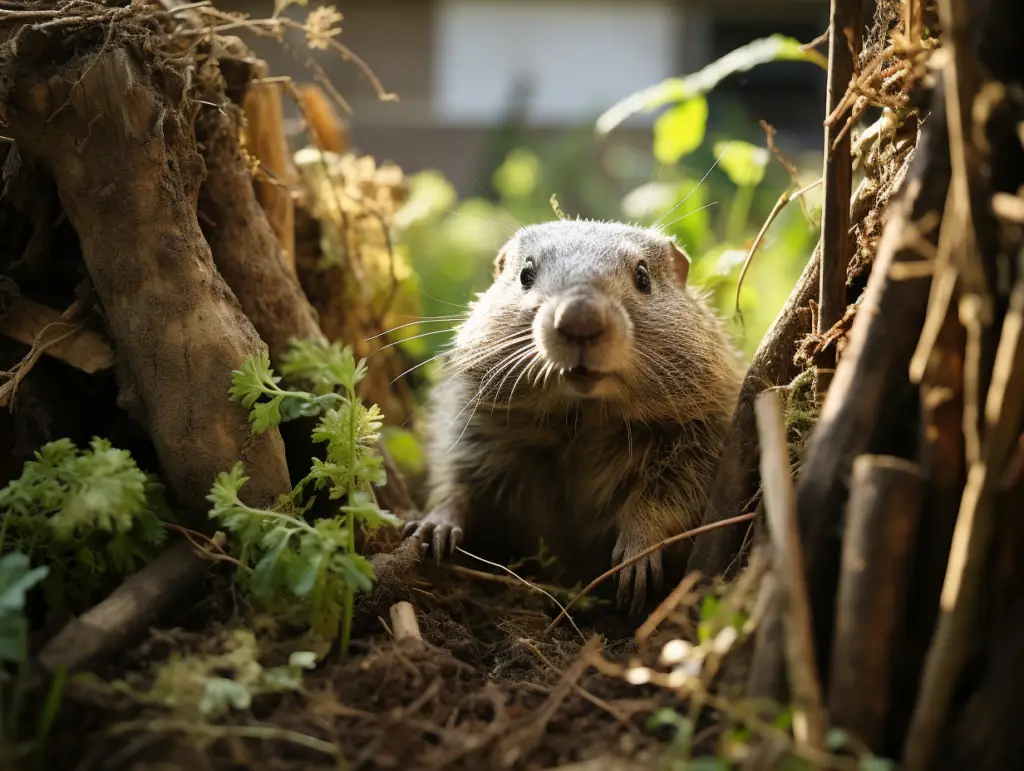
Groundhogs can cause significant damage to gardens, crops, and structures. They are known for their burrowing habits, which can lead to structural damage to sheds, decks, and even the foundation of a house. They can also cause damage to cars and wood piles.
One of the most common ways groundhogs cause damage is through their feeding habits. They are herbivores and will eat a variety of plants, including vegetables and flowers. This can be especially frustrating for gardeners, as groundhogs can quickly destroy a garden. They will often eat the entire plant, including the roots, leaving nothing behind.
In addition to their feeding habits, groundhogs are also known for their burrowing. They will dig tunnels underground, which can weaken the soil and cause damage to the foundation of a structure. This can be especially problematic if a groundhog has made a burrow under a shed or other outbuilding, as it can lead to structural damage.
Groundhog tunnels can also be a hazard for people walking or driving on a property. The tunnels can cause the ground to become unstable, leading to tripping hazards or even damage to vehicles.
Natural Repellents and Deterrents

If you’re looking for a natural way to get rid of groundhogs under your shed, there are several plant-based and animal-based repellents and deterrents you can use. Here are a few effective options:
Using Plant-Based Repellents
- Garlic and Cayenne: Groundhogs don’t like the smell of garlic or the heat of cayenne pepper. You can sprinkle garlic powder or cayenne pepper around the entrance of the groundhog burrow or mix it with water to create a spray. However, keep in mind that these options may need to be reapplied regularly.
- Mint: Mint is another plant that groundhogs don’t like. You can plant mint around your shed or sprinkle dried mint around the entrance of the burrow to keep them away.
- Herbs: Some herbs like basil, lavender, and rosemary have strong scents that groundhogs dislike. You can plant these herbs around the shed or use them as a spray to deter groundhogs.
Utilizing Animal-Based Repellents
- Castor Oil: Castor oil is a natural repellent that can be used to keep groundhogs away. You can mix it with water and spray it around the entrance of the burrow or sprinkle it on the ground.
- Clover: Groundhogs don’t like the smell of clover. You can plant clover around the shed or sprinkle dried clover around the entrance of the burrow.
- Talcum Powder: Talcum powder is another natural repellent that can be used to deter groundhogs. You can sprinkle it around the entrance of the burrow to keep them away.
- Agricultural Lime: Agricultural lime is a natural product that can be used to deter groundhogs. You can sprinkle it around the entrance of the burrow or mix it with water to create a spray.
- Peppermint Oil: Peppermint oil is a strong scent that groundhogs don’t like. You can mix it with water and spray it around the entrance of the burrow to keep them away.
- Dog Urine: Groundhogs are afraid of dogs, so you can use dog urine to deter them. You can place dog urine-soaked cotton balls around the entrance of the burrow or spray it around the shed.
- Spicy Spray: You can create a spicy spray by mixing hot sauce, water, and dish soap. Spray it around the entrance of the burrow to keep groundhogs away.
Using natural repellents and deterrents can be an effective way to get rid of groundhogs under your shed. However, keep in mind that not all of these options may work for you, and you may need to try a few different methods before finding the one that works best.
Physical Barriers and Exclusion Methods
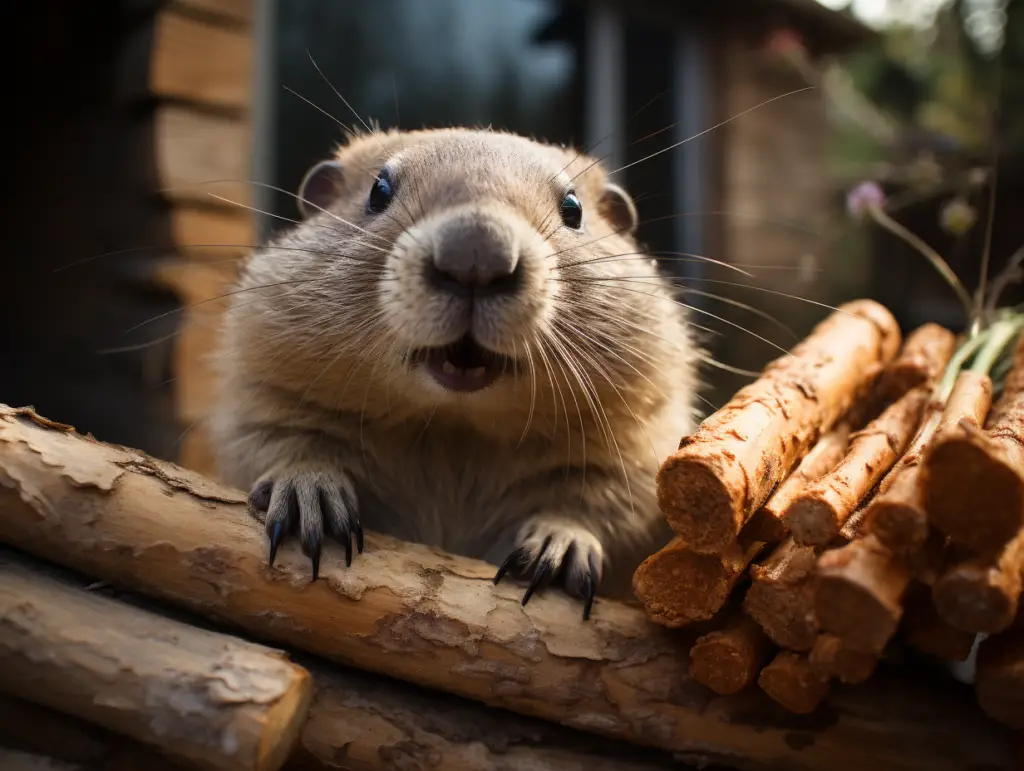
Physical barriers and exclusion methods are some of the most effective ways to get rid of groundhogs under a shed.
These methods involve setting up barriers or modifying the environment to prevent groundhogs from accessing your property. In this section, we will discuss some of the most common physical barriers and exclusion methods used to keep groundhogs away.
Fencing Solutions
Fencing is one of the most effective ways to keep groundhogs out of your property. A fence should be at least 3 feet deep and 3 feet tall, and should be made of heavy poultry wire or 2-inch woven-mesh wire.
The bottom 12 inches of the fence should be buried in the ground, with the lowest 6 inches bent in an L-shape extending outward from the garden. This will prevent groundhogs from burrowing under the fence.
Another fencing solution is the L-footer style fencing. This is essentially wire mesh that extends away from the fence under the ground in an L shape. L-footer style fencing is the most effective barrier against burrowing pests like woodchucks.
You can also make L-footers yourself with fencing material and wire mesh. Ideally, footers should be installed when the fence is installed.
Underground Exclusion
Groundhogs are known for digging deep burrows underground. To prevent groundhogs from burrowing under your shed, you can install an underground exclusion barrier.
This involves digging a trench around the perimeter of your shed and lining it with chicken wire or hardware cloth. The wire should extend at least 12 inches underground and be bent at a 90-degree angle away from the shed. This will prevent groundhogs from burrowing into your shed.
Another underground exclusion method is to install a wire mesh barrier around the perimeter of your shed. This involves digging a trench around the perimeter of your shed and lining it with wire mesh. The mesh should extend at least 12 inches underground and be bent at a 90-degree angle away from the shed. This will prevent groundhogs from burrowing into your shed.
Overall, physical barriers and exclusion methods are effective ways to keep groundhogs away from your shed. By installing a fence or underground exclusion barrier, you can prevent groundhogs from accessing your property and causing damage.
Trapping and Relocation of Groundhogs
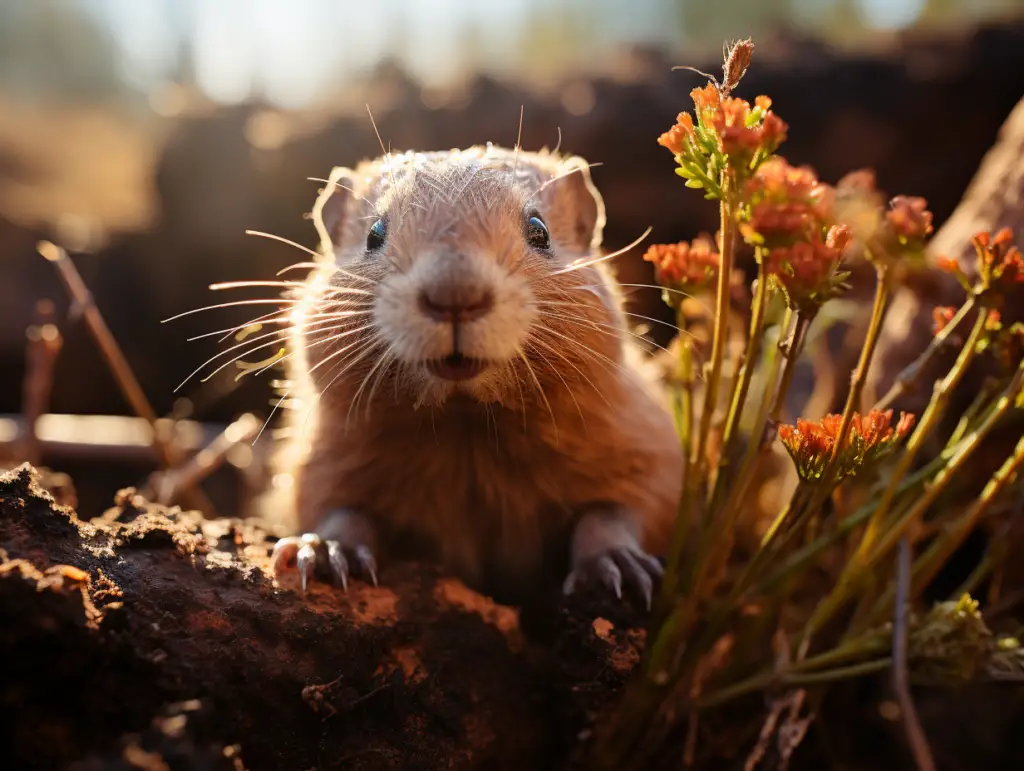
Trapping and relocation of groundhogs is one of the most humane ways to get rid of groundhogs. It involves catching the groundhog in a live trap and then relocating it to a different area.
Here are some tips on how to trap and relocate groundhogs effectively.
Choosing the Right Trap
When choosing a trap, it is important to consider the size of the groundhog. A trap that is too small may not be effective, while a trap that is too large may be difficult to handle. A live trap is the most common type of trap used for groundhogs. It is designed to catch the groundhog alive and unharmed.
Effective Baiting Strategies
To effectively bait a trap, it is important to use a bait that is attractive to groundhogs. Fresh fruits like cantaloupe, apples, and pears are some of the best baits for groundhogs. It is also important to place the bait inside the trap, near the trigger mechanism.
When baiting a trap, it is important to consider the location of the trap. Groundhogs are more likely to enter a trap if it is placed near their burrow or in an area where they have been spotted. It is also important to check the trap regularly to ensure that the groundhog is not left in the trap for an extended period of time.
If you are not comfortable trapping and relocating groundhogs, it is best to seek the assistance of a professional. They have the experience and knowledge to safely and effectively remove groundhogs from your property.
Overall, trapping and relocation of groundhogs is an effective and humane way to get rid of groundhogs. By choosing the right trap and using effective baiting strategies, you can successfully catch and relocate groundhogs to a different area.
Professional Pest Control and Wildlife Services
If you have tried different DIY methods to get rid of groundhogs under your shed and they aren’t working, you might want to consider hiring a professional pest control or wildlife control service.
These services have the knowledge, experience, and equipment needed to effectively remove groundhogs and prevent them from coming back.
Pest control services specialize in eliminating pests such as insects, rodents, and other animals that can cause damage to your property. They can identify the source of the problem and use a variety of methods such as traps, baits, and fumigation to eliminate the pests.
Wildlife control services, on the other hand, specialize in removing wild animals such as groundhogs, raccoons, and squirrels from your property. They use humane methods to trap and relocate the animals to a safe location.
When choosing a pest control or wildlife control service, it’s important to choose a reputable company with a proven track record of success. Look for a company that is licensed, insured, and certified by the state or local authorities.
Before hiring a service, make sure to get a detailed estimate of the costs involved and the methods they will use to remove the groundhogs. You should also ask about any guarantees or warranties they offer.
In summary, professional pest control and wildlife services can be a great option for getting rid of groundhogs under your shed. They have the expertise and equipment needed to effectively eliminate the problem and prevent it from happening again.
Alternative Groundhog Control Methods
Aside from the traditional methods of trapping and relocating groundhogs, there are several alternative methods that can be used to control groundhog populations.
These methods are generally more humane and less labor-intensive than trapping, and can be just as effective if used correctly.
Repellents
One way to deter groundhogs from taking up residence under your shed is to use repellents. Ammonia is a common repellent that can be used to discourage groundhogs from entering an area. Simply soak rags or towels in ammonia and place them around the perimeter of your shed. The strong odor of ammonia will make the area unappealing to groundhogs and other rodents.
Another option is to use animal repellent sprays that are specifically designed for groundhogs. These sprays are typically made with natural ingredients like spices and can be applied directly to the soil around your shed. Some people have also had success using mothballs as a repellent, but it is important to note that mothballs can be toxic to pets and wildlife.
Vegetation Control
Groundhogs are attracted to areas with plenty of vegetation, so removing or trimming back any plants or trees near your shed can help deter them from moving in. This can also help to make your shed less attractive to other burrowing animals like gophers and moles.
If you have a vegetable garden near your shed, be sure to harvest your crops regularly and keep the area free of fallen fruits and vegetables. Groundhogs are known to be particularly fond of peaches, corn, and lettuce, so it is important to keep these plants well-protected.
Vibrations and Deep Tunnels
Groundhogs are sensitive to vibrations and will often avoid areas that are noisy or unstable. You can use this to your advantage by installing a sonic groundhog repeller near your shed. These devices emit high-frequency sound waves that are designed to be unpleasant to groundhogs and other burrowing animals.
Another option is to create deep tunnels around the perimeter of your shed. Groundhogs prefer to burrow in shallow soil, so digging a trench that is at least 2 feet deep can make your shed less appealing to them.
Gas Cartridges
If all else fails, you can use gas cartridges to eliminate groundhogs from your property. These cartridges are inserted into the ground near the entrance to the groundhog’s burrow and release a toxic gas that will kill the animal within a few minutes. It is important to use caution when using gas cartridges, as they can be dangerous if not handled properly.
In conclusion, there are several alternative methods that can be used to control groundhog populations under your shed. These methods range from simple vegetation control to more complex techniques like gas cartridges and sonic repellers. By using a combination of these methods, you can effectively deter groundhogs and keep your shed and property safe from damage.
Frequently Asked Questions
How do I get a groundhog out from under my shed?
There are several ways to get a groundhog out from under your shed. One of the most effective ways is to use a live trap. Place the trap near the entrance of the groundhog’s burrow and bait it with something like fruits, vegetables, or peanut butter. Once the groundhog is trapped, release it in a nearby wooded area. You can also try using repellents or scare tactics to encourage the groundhog to leave.
What do groundhogs hate the most?
Groundhogs hate the smell of certain spices and essential oils such as cayenne, garlic, and peppermint oil. You can create a natural groundhog repellent spray by mixing spices or peppermint oil with water and spraying it around your garden and near groundhog tunnel entrances.
How do you encourage groundhogs to leave?
One way to encourage groundhogs to leave is to eliminate their food source. Remove any fruits, vegetables, or plants that groundhogs like to eat from your garden. You can also try using repellents or scare tactics to encourage the groundhog to leave.
What is groundhogs worst enemy?
Groundhogs have several natural predators, including foxes, coyotes, and dogs. Owls and hawks also prey on groundhogs.
Will mothballs keep groundhogs away?
Mothballs are not an effective way to keep groundhogs away. They may deter the groundhog for a short period of time, but the smell can be harmful to pets and other wildlife.
How to get rid of a groundhog without killing it?
There are several ways to get rid of a groundhog without killing it. You can use a live trap and release the groundhog in a nearby wooded area. You can also try using repellents or scare tactics to encourage the groundhog to leave. It’s important to note that relocating groundhogs may not always be legal, so check with your local wildlife agency before attempting to do so.



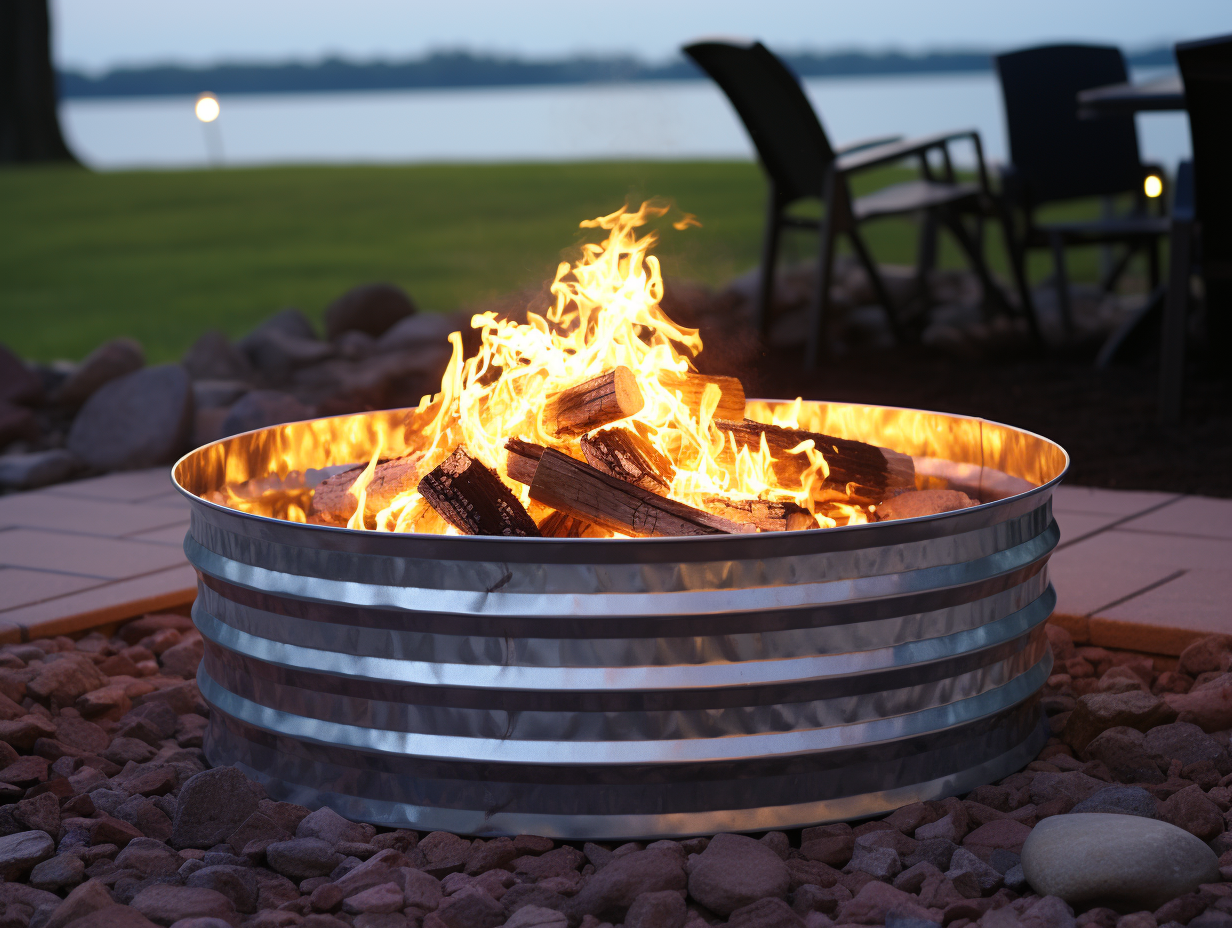
Leave a Reply